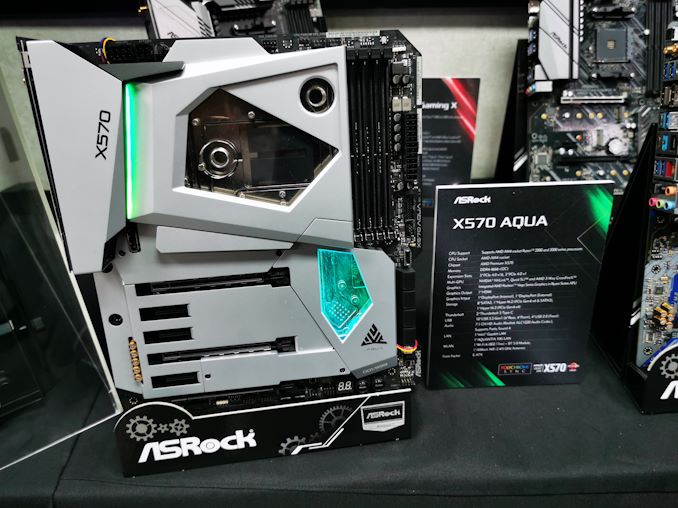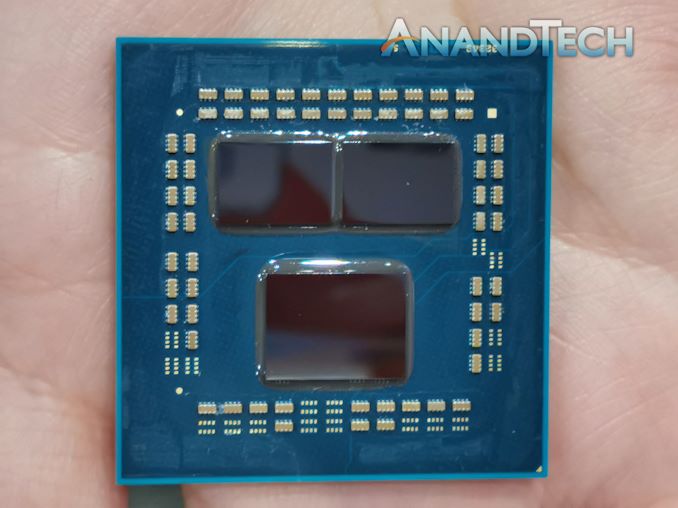AMD Confirms PCIe 4.0 Not Coming to Older Motherboards (X470, X370, B350, A320)
by Ian Cutress on June 2, 2019 11:15 PM EST
One of the salient points of the next generation Ryzen 3000 CPUs coming next month was the support around PCIe 4.0. As the successor to PCIe 3.0, offering double the bandwidth and a range of other optimizations, the combination of the new technology paired with existing and new AM4 motherboards was always going to generate a bit of an issue with support. AMD, through a Reddit post, and confirmed by our sources at AMD’s partners, has clarified the issue.
Moving from PCIe 3.0 to PCIe 4.0 on a motherboard isn’t overly difficult. In order to qualify for PCIe 4.0 use, the signaling guidelines for the connecting traces between the CPU and PCIe slots have to be met. If the PCIe 3.0 motherboard was over-engineered in the first place, and supports PCIe 3.0 very well, there is every chance that those same connecting traces can carry a PCIe 4.0 signal without any issue. The problem becomes when some motherboards can succeed in PCIe 4.0, whereas others cannot because they can only barely support PCIe 3.0.
Before the launch of Ryzen 3000, many users (ourselves included) had speculated about PCIe 4.0 support on older motherboards, such as X470, X370, and the cheaper chipset variations. For those users who had bought into this market with a nice expensive motherboard, it was expected that these models were designed rigorously enough to also support PCIe 4.0. We have even seen some GIGABYTE motherboards already provide the option in the BIOS to support PCIe 4.0. However, AMD has nixed that idea, and those BIOS options will be reversed.
The only motherboards that will support PCIe 4.0 in the future will be the 500-series chipset, which is currently only the X570 range, although the B550 line-up is expected to come later this year. These chipsets are qualified for PCIe 4.0, but older chipsets will not be. AMD doesn’t want to create confusion in the market based on motherboard quality, where some users might be able to have it and others might not.
The exact quote comes from Robert Hallock, one of the Ryzen product managers at AMD, in a post on Reddit:
"Pre-X570 boards will not support PCIe Gen 4. There's no guarantee that older motherboards can reliably run the more stringent signaling requirements of Gen4, and we simply cannot have a mix of "yes, no, maybe" in the market for all the older motherboards. The potential for confusion is too high. When final BIOSes are released for 3rd Gen Ryzen (AGESA 1000+), Gen4 will not be an option anymore. We wish we could've enabled this backwards, but the risk is too great."
This means that in this instance, the recommendation becomes that if a user wants full access to PCIe 4.0, they will have to purchase an X570 motherboard. All Ryzen 3000 CPUs are likely to still run in X470 and X370 motherboards with a BIOS update, but because PCIe is backwards compatible, these CPUs will run in PCIe 3.0 mode.
To be honest, there are two ways to take this news. Sure, it’s a kick in the craw for anyone who invested in a high-end X370 or X470 motherboard. However the flip side of this is that there are not going to be many PCIe 4.0 devices on the market through 2019. We will see AMD’s Navi GPUs which are expected to replace the Polaris mid-range product stack, so if you already have a high-end GPU, it’s not going to bother you too much. For the PCIe 4.0 SSDs, we expect a couple of them to launch but these are the Phison E16 designs which run at 8W TDP and will likely command a high premium with an 8W TDP too – it might be best to wait until 2020 when dedicated PCIe 4.0 controllers come to the market.
I’ll be honest, it does make our job a bit easier. I contemplated having a news post where we kept track of all the 300-series and 400-series motherboards that support PCIe 4.0, but that suddenly got a lot simpler: if you want PCIe 4.0 on AMD in 2019, get a 500-series motherboard.
| Want to keep up to date with all of our Computex 2019 Coverage? | ||||||
 Laptops |
 Hardware |
 Chips |
||||
| Follow AnandTech's breaking news here! | ||||||
Source: Reddit











50 Comments
View All Comments
Haawser - Monday, June 3, 2019 - link
I'd rather have solid PCIe3 than sketchy PCIe4 tbh. It's not like my graphics card or SSD can use PCIe4 anyway. And I don't intend to upgrade them just because I got a new CPU.As/when my existing motherboard dies I'll probably upgrade it to PCIe4, but I'm not going to try and hack it for some sketchy solution when I don't need to. That's just asking for a BSOD.
willis936 - Monday, June 3, 2019 - link
On buses you get the best signal integrity at the end of the line. The reflections from the RF stub at the end of the line interfere. There is less insertion loss when you’re closer, but when it’s a bus that isn’t the primary concern. Just read your mobo manual about where to place the DIMMs.seamonkey79 - Monday, June 3, 2019 - link
I get it, and I'm not even really upset about it. Only thing is - I'm unlikely to spring for a board the level of the Crosshair VII again. It's not that it's been a bad board, which is good considering the cost. It's just that it doesn't, in hindsight, seem to bring anything really worthy of the cost. I don't LN2 cool, I'm letting XFR/PB2 handle my clocks. I'm running a 2600X and a single RTX 2080. The only real thing it brought was the ability to run 2 NVME drives, but I didn't *need* to do that, it was just nicer to grab a 1TB NVME for the 2nd slot instead of just getting a SATA (they were the same price when I ordered).The one thing that was going to 'save' my purchase of it was it moving seemlessly to PCIe 4.0.
That said, I don't have buyers remorse or anything, and as the article says it's not like that's something that will really mean anything, especially to me, for quite awhile. It does make me a little happier, actually, because now I know that spending that much on a board is a waste for me, so it'll save me money down the road (yay!).
nevcairiel - Monday, June 3, 2019 - link
If you have a decent high-end X470 board already, I would probably just skip X570 and roll with it as long as it carries you. One or two more generations and the socket will probably change as well, requiring a new board anyway.SmCaudata - Monday, June 3, 2019 - link
Yeah, I used to go high end, but my last (and future) builds I've made a list of must have, nice to have, and don't care. I buy the cheapest board that meets it. I keep and "future update" promises out of the equation.yankeeDDL - Monday, June 3, 2019 - link
I have a question.I have a B350 board, and based on this article, I won't be getting PCIe 4.0 support.
I am using it with an R5 1600 and a Radeon R9 270x, with a Samsung 960 in the M2 slot.
Would going to a newer motherboard that supports PCIe4.0 make any sitnificant difference?
I don't think so, but I'd like your opinion.
Irata - Monday, June 3, 2019 - link
Short answer: It wouldn't since your CPU does not suport PCIe 4.0 and it honestly does not seem that you are constrained wrt available PCIe lanes right now.nevcairiel - Monday, June 3, 2019 - link
In short: No.First of all, you would need a new CPU that supports PCIe 4.0, ie. a Ryzen 3000 CPU. If you would plan to buy one of those, there might be other factors that might favor a X570, but for PCIe 4.0 alone -- there aren't even any devices that can really benefit.
yankeeDDL - Monday, June 3, 2019 - link
Thank you both.I was considering an upgrade to the R9 3900x once the price goes down (even next year, when the 4*** are released): it seems to me that going from 6 to 12 cores would bring a noticeable bump in performance, at a very decent cost (in one year the 3900x could easily drop sub 400usd).
nevcairiel - Monday, June 3, 2019 - link
A B350 board might not have the power delivery design for a 12-core CPU, so in such a case it would likely be a good idea to change that in any case. Well, all depends on your particular model of B350 in any case!